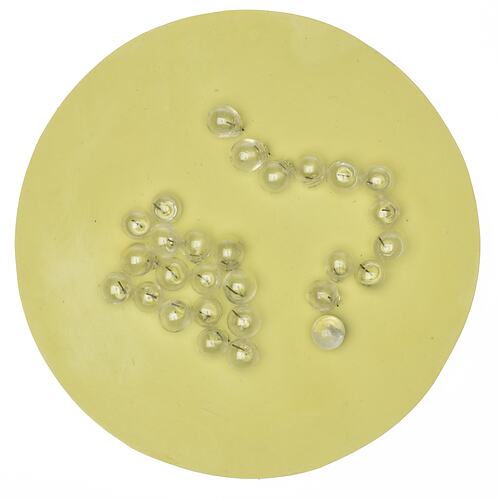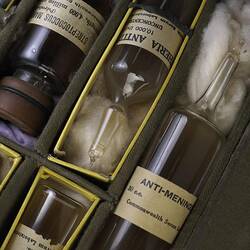Scarlet fever (sometimes known as scarlatina) caused repeated epidemics in Victoria and around the world during the 19th century. Known for centuries as a serious illness that particularly impacted children, it could be rapidly fatal. Scarlet fever is caused by the bacteria Streptococcus pyogenes, causing symptoms including a sore throat and distinctive rash, as well as swollen glands and broken blood vessels. Complications such as septicemia, pneumonia and toxic shock syndrome can lead to death. Scarlet fever readily spreads through airborne droplets, contact with skin, clothes or bedding; living in close contact is a particular risk.
Victoria's worst epidemic of scarlet fever occurred in 1875-76. Actions to mitigate the crisis included isolation of sick children, liberal use of disinfectants, careful laundering of bedding and clothing, cleaning of streets and lanes by inspectors of nuisances, and house-to-house checks in areas of concern such as Fitzroy. The Madden family lost three children to scarlet fever, and by February 1876 it had broken out across Victoria, including Daylesford, Horsham, Deniliquin, Bendigo and Ballarat. In Castlemaine children were reported to have gone to bed well and were dead by morning.
In 1889 the North Eastern Ensign reported that 'No more frightful disease can attack a child than scarlet fever, and as an epidemic of this disease is now among us, it behoves all, and especially those with children, to know something about it. As everybody knows, this is a disease with a rash; indeed, it owes its name to the scarlet hue of the eruption.' Treatment included removing furniture from the sickroom, improving ventilation, rubbing the body with disinfectant and bedrest for three weeks. Anxiety about the source of infection led to the boiling of milk and suspicion about contacts such as letters from infected families.
Specialized treatment for scarlet fever became available with the opening of Fairfield Infectious Diseases Hospital in 1904. Outbreaks continued, however, such as six cases reported in Beulah in January 1910 and an epidemic 1930-33. A serious outbreak in Geelong in 1936 caused Geelong Hospital to set up tents to meet patient demand. Scarlet fever was still problematic during World War II, with another epidemic breaking out in 1939. In May 1941 Fairfield Infectious Diseases Hospital was treating 250 scarlet fever patients (of a total of 620 patients). The virulence of scarlet fever was gradually declining, however, partly due to biological variation, and outbreaks in Victoria decreased. Today it is readily treated by antibiotics, although no vaccine is available.
References
'Diseases and Epidemics', eMelbourne Encyclopedia, http://www.emelbourne.net.au/biogs/EM00473b.htm, accessed 15/5/2020.
1875 'THE SCARLET FEVER.', The Australasian (Melbourne, Vic. : 1864 - 1946), 16 October, p. 21. , viewed 15 May 2020, http://nla.gov.au/nla.news-article142154512.
1876 'SCARLET FEVER IN VICTORIA.', The Sydney Morning Herald (NSW : 1842 - 1954), 2 February, p. 3. , viewed 15 May 2020, http://nla.gov.au/nla.news-article13372650.
1876 'SCARLET FEVER IN VICTORIA.', The Sydney Morning Herald (NSW : 1842 - 1954), 23 March, p. 3. , viewed 15 May 2020, http://nla.gov.au/nla.news-article13370765.
1910 'OUTBREAK OF SCARLET FEVER.', The Argus (Melbourne, Vic. : 1848 - 1957), 21 January, p. 8. , viewed 15 May 2020, http://nla.gov.au/nla.news-article10828938.
1889 'SCARLET FEVER.', The North Eastern Ensign (Benalla, Vic. : 1872 - 1938), 1 March, p. 4, viewed 15 May 2020, http://nla.gov.au/nla.news-article70081163.
1936 'SCARLET FEVER EPIDEMIC', The Herald (Melbourne, Vic. : 1861 - 1954), 27 February, p. 16. , viewed 15 May 2020, http://nla.gov.au/nla.news-article244826178.
1941 'SCARLET FEVER EPIDEMIC', The Argus (Melbourne, Vic. : 1848 - 1957), 29 May, p. 10. , viewed 15 May 2020, http://nla.gov.au/nla.news-article8186319.
More Information
-
Keywords
-
Authors
-
Article types


